Silver & Gold: An Orange Picker's Meditation
From Mission Gardens to Monkey Glands
YESTERDAY, I picked our ancient orange tree that stands in the front yard sidewalk. It’s enough fruit to feed a small army.
We say 'ancient' because the tree is spotted in black and white photographs from the turn of the 20th century, silver gelatin prints that capture a younger California, a younger tree, different hands tending to its harvest. Imagine all the secrets these branches have seen.
My hands are slow and clumsy— I will not be getting hired to pick the neglected groves of Southern California.
But by being out on a pretty busy street all day, I talk to scores of passersby who tell me the story of their grandmother’s orange tree, or the summers they worked in the groves when it was 110 degrees in the shade. Some eagerly tear into the fruit I offer them, others are afraid it will be “sour.”
No, no, no. You don’t cultivate a tree this old for sour surprises!
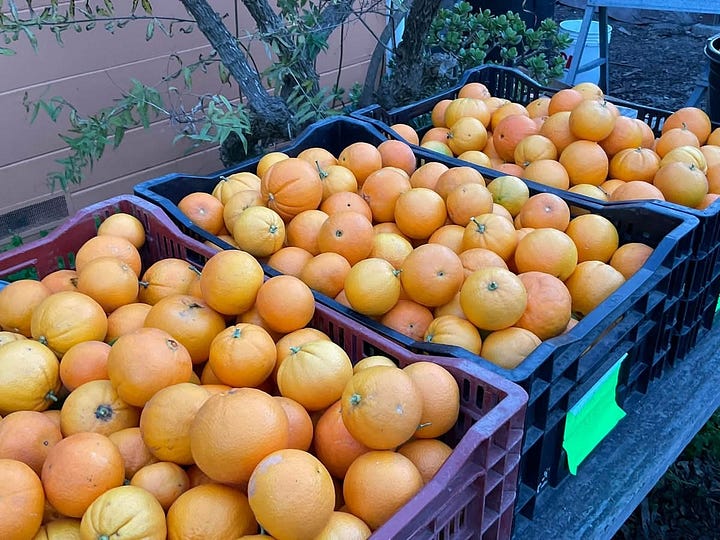
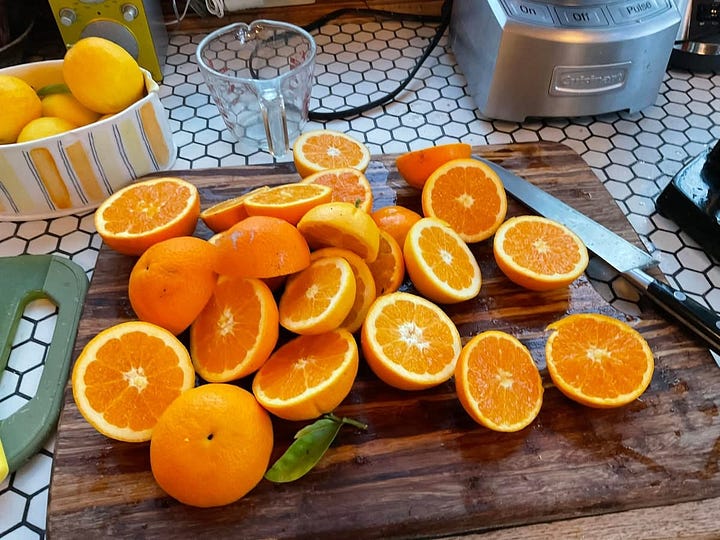
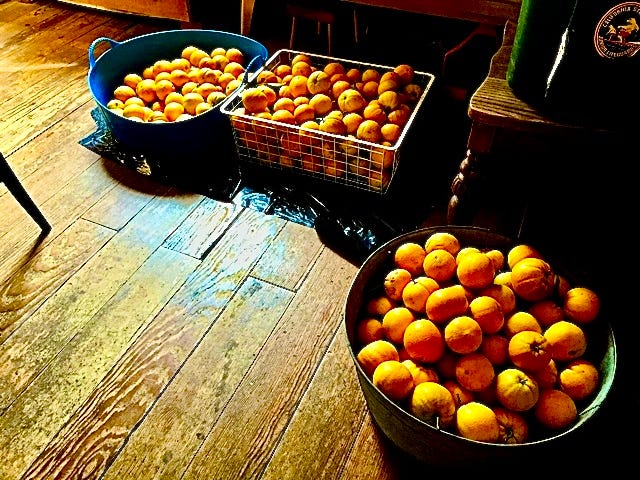

The Color Orange vs. The Fruit
Oranges— all citrus, actually— are so ubiquitous to California sunshine that I was surprised to discover they're a colonial import with as much of a crazed greedy legacy as all the other golden nuggets of our territorial history.
The word orange derives from a transliteration of the Sanskrit word for the orange tree: nāraṅga.
Oranges were "discovered" by the West in the Southeastern Himalayan foothills. In those days, if a wandering conqueror saw something the color of the sun, they would say it was “red-yellow," or "saffron." It wasn't until the 1500s that Europeans became familiar with orange trees and the "color" appellation caught hold.
It was through Christian missionary zeal — a historical irony not lost on anyone who remembers orange juice's later religious crusaders — and the search for gold, that oranges made their way to California. Spanish missionaries brought orange trees to San Diego in 1769.
From StoryMaps, “The Origin of Oranges:”
“The first orange grove was planted at the San Gabriel Mission in 1804, the 4th of 21 Spanish missions to be established in California.” —A cruel place to begin.
“The first commercial orchard was planted in 1840 near present day Los Angeles by William Wolfskill, the “granddaddy” of California’s citrus industry.”
—William was born in Kentucky, but applied for Mexican citizenship when he found a loophole that would allow him to buy tracts of California land without any questions!
“When the 1849 gold rush hit, there was a huge demand for oranges – by this time it was known they prevented scurvy. This allowed Wolfskill’s orchards to flourish.”
The Northern California plantings followed the route of the Spanish Missions. With one exception:
“ . . . The first orange tree in Northern California was planted in 1856, next to a bar in Oroville. The tree is known as the “Mother Orange Tree.”
That’s just 20 years before my yard tree was likely planted!
Gold Miners used to come to the bar and enjoy oranges, planting their seeds and growing more orange trees.”
The Mother is still there, with a plaque and a little fence, and signs entreating visitors to respect her vintage.
When Only the Juice Will Do
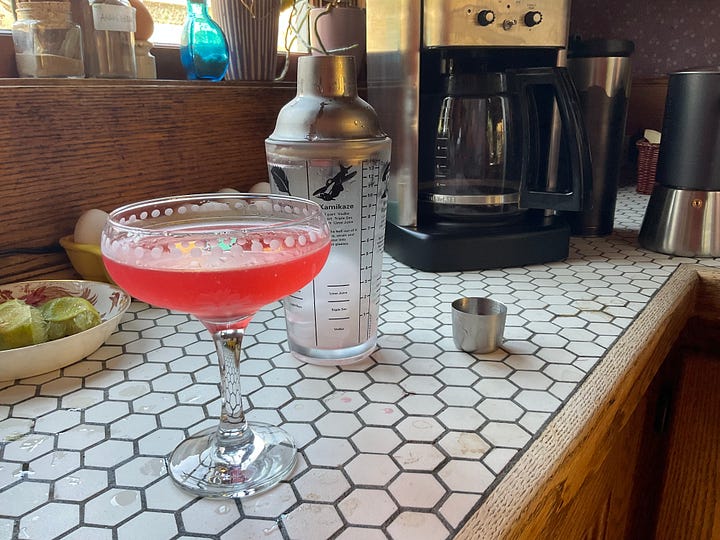
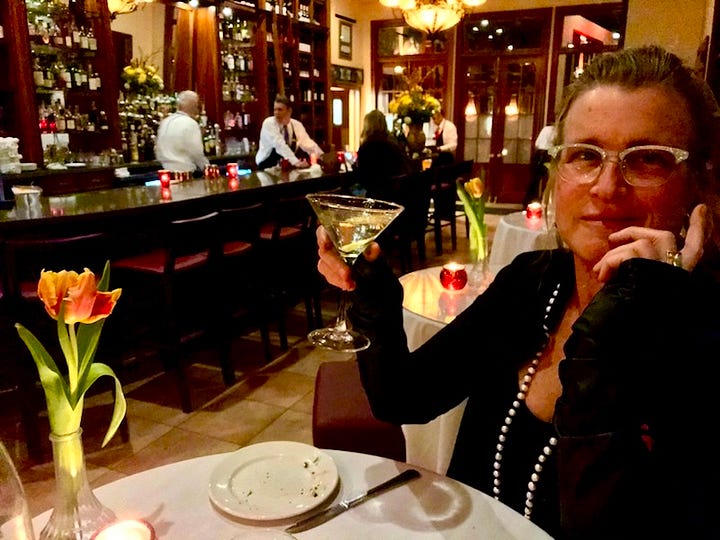
The Mother Orange Tree's placement beside a bar seems prophetic— California's oranges have been enhancing spirits as long as they've been preventing scurvy. Standing beneath my own tree this season, I think about how the best cocktails, like the best histories, depend on fresh ingredients.
There are a couple of famous pre-Prohibition drinks that are absolute garbage unless you squeeze fresh OJ into the glass.
For that reason, these two classics haven’t become ubiquitous at most commercial bars, but you could make them at home, and be The Host Most Adored.
Monkey Gland
Prepare the glass, then shake and strain. Garnish with Orange slice, or pomegranate seeds, or both!
For the glass: 1 dash or spray absinthe, swirled round the coupe
2 ounces gin
1 ounce freshly-squeezed orange juice
1 teaspoon grenadine, to taste
Bronx with Bitters
Shake and strain:
2 ounces gin
1 ounce freshly-squeezed orange juice
¼ ounce sweet vermouth
¼ ounce dry vermouth
Dash of Angostura bitters
A few old-timers who cross my sidewalk citrus station remember my picking days from previous years. “Oh man, you’re all silver-haired now!” one dog-walker said. —Like a silver gelatin photograph. I think about the young miners planting their seeds, the missionaries with their saplings, and all the grandmothers’ trees that came after. Every cold fresh-squeezed glass has the magic bred into it. My little tree keeps producing liquid gold, and I keep squeezing and pouring the best of it, the best of what we have to give.
More Reading on the Subject:
"Citrus: A History" by David J. Mabberley
“In Search of William Wolfskill,” by Conchita Thornton Marusich
"Orange Empire: California and the Fruits of Eden" by Douglas Cazaux Sackman
"Seeds of Change: Five Plants that Transformed Mankind" by Henry Hobhouse has a significant discussion of how Portuguese traders transformed global agriculture.
Peter Stampfel just reminded me that I have to include the great John McPhee. His book, Oranges, reads like a comic novel and you’ll never sip OJ the same way again!


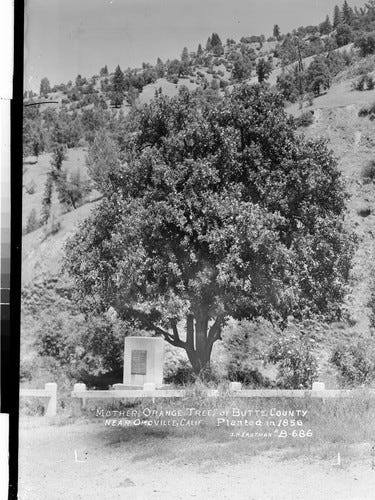
I have known my partner Jon for 35 years, and I never knew this: When he read my farm work story today, he casually said, “Oh yeah, I harvested beans for Del Monte in Wisconsin in the 70s.”
He said he sat on a wooden bench strapped to a harvester “that would be illégal now” — a 1600 cubic inch gas engine, with dirt flying and the heat about to fry his ass off. You could cook potatoes on the manifold.
He worked 8 days on, one day off. 14 hours a day. Someone else deposited your paycheck for you bc you were DEAD to the world when you were done.
$10 an hour, which was considered great money at the time.
He took a bus to the plant before dawn, then a bus took him to the fields. They picked around the clock until the first frost. Later, he worked in the canning plant, packing up the “shiners,” the label-less cans.
He liked working inside, with other people, and he started an underground comic book that circulated hand to hand, called “Barney Bean Rat” who always had a smart ass thing to say about the boss. I’m going to try to get him to recreate old Barney for me!
More nosy questions from me: Have you picked fruit as a seasonal job? Or were you ever sent as a kid into the fields to pick, like schoolwork? I went to elementary school in California where in 1st and 2nd grade, we were all sent out to the adjacent walnut groves to pick the fruit. My grandma taught me to pick berries and avoid thorns. No one used gloves. Now I have a pair of gloves that look like something out of a Game of Thrones gauntlets pair.